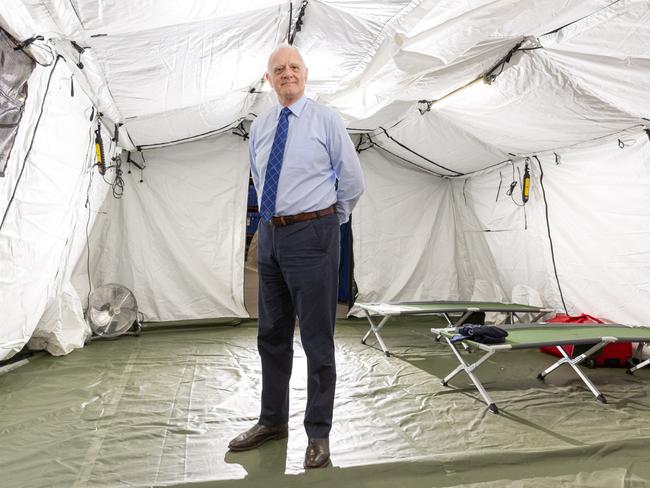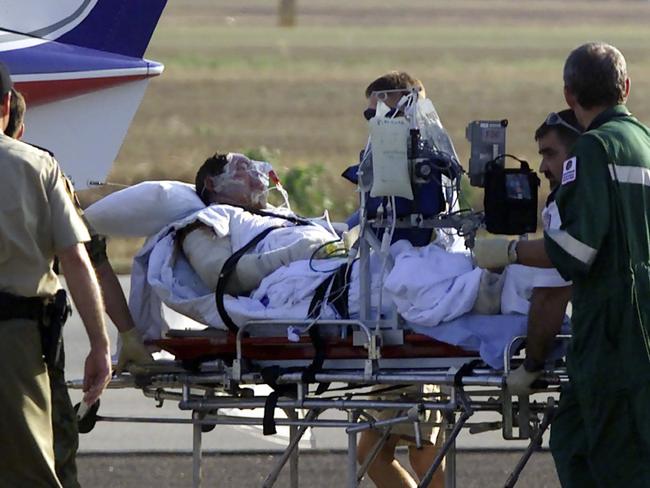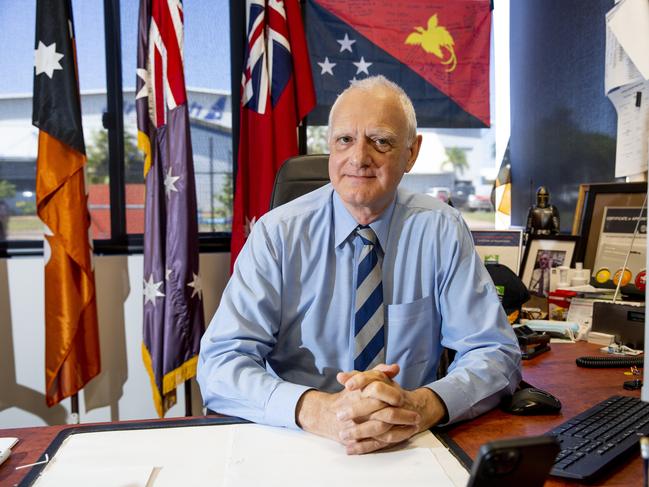‘A triumph of good clinical practice’: How the National Critical Care and Trauma Response Centre emerged
Dr Len Notaras oversaw the operations on the ground at the Royal Darwin Hospital while treating 2002 Bali bombings victims. Read what happened in the years following.
News
Don't miss out on the headlines from News. Followed categories will be added to My News.
The man who spearheaded the emergency response to the Bali terror attacks has reflected on how the “shining light of hope” came out of such trauma and devastation.
Dr Len Notaras led the plan to treat 65 wounded Australians at Royal Darwin Hospital with his team of hand-picked clinicians.
The then-RDH general manager says beyond the machines and the equipment, it was the human spirit that underpinned the processes that would go on to be considered world-leading.
“Out of the bleakest moment, is a shining light of hope,” Dr Notaras said.
“When I arrived at the beginning of the nineties I had the privilege of building up the clinical medical workforce,” he said.
“I actually knew the value of the clinicians that I had working, the nurses, doctors and allied health professionals.
“I knew how good they were and I had faith in them rather than in the machines that went ping.”
His instinct, and his team’s skill, was proved on October 13, 2022 – the day after the deadly terror attack.
How they responded to the crisis has left a crucial legacy.
The emergency plan they used has been replicated and developed to become a sophisticated response mechanism which has saved “tens of thousands” of lives across the globe since.

The systems he and his staff put in place would go on to be known as the National Critical Care and Trauma Response Centre, but it would not be known as that until a fateful phone call from then-prime minister John Howard.
Dr Notaras received that cold call about 5am on a Sunday, with the country’s leader wanting to know if the medico and his team could continue the service they devised in mid-October 2002.
“Mr Howard was so pleased and very impressed at the way which RDH and the incredible team that I worked with had responded,” Dr Notaras said.
With his two finger typing technique, Dr Notaras was given until noon that same day to create a plan of how a crisis response centre could function.
With the Australian Medical Assistance Team as an addition to the plan, it is one of the few emergency medical teams globally-verified by the World Health Organisation.
Dr Notaras’s original sketch of the plan has evolved greatly from its humble beginnings that co-ordinated the RDH response to the Bali wounded.

Darwin was designated as the hospital to receive the critically injured patients, and less than 24 hours after the blasts, Dr Notaras had to figure out how the “dinky” 297-bed RDH – as it was at the time – could handle taking on the copious wounded.
It was a decision that depended on the staff and their capabilities.
Overseeing the whole operation on the ground, he dusted off the cyclone and external emergency plan and got to work.
Dr Notaras, a tall, softly spoken man of eloquence and poise, maintains the success of the RDH response was purely because of the staff – from the gardeners to the top doctors.
“It was a triumph of good clinical practice,” he said.

Placing his hand across his upper left chest, Dr Notaras, who has been chief executive of the centre since 2009, said the NCCTRC had since grown to become the most effective crisis response team in the world.
“I can say that hand on heart,” he said.
“It is world renowned for what it does and how it does it, it is a model to be emulated.
“We set up the standard.”
The purpose of the NCCTRC is to quickly and effectively deploy AUSMAT staff into a community and help in a crisis, but only when invited.
“We become an asset and not a burden on a community,” Dr Notaras said.
With a database of 8800 members across the nation, the federally funded critical care team is always on standby to respond to any emergency at any time.
In the last 24 months the NCCTRC, based in Darwin, has responded to 26 crises nationally and internationally.
“It’s a model that the WHO has taken on as the epitome of the way in which people should prepare and respond,” Dr Notaras said.
“It’s a monument to the tragedy that was that first Bali.”
More Coverage
Originally published as ‘A triumph of good clinical practice’: How the National Critical Care and Trauma Response Centre emerged




